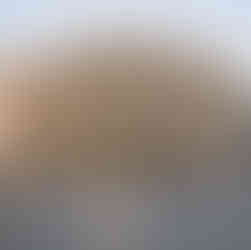Germany’s Museum Barberini – Potsdam’s new museum just celebrated its first annive
- artandcakela
- Feb 28, 2018
- 3 min read

View of Potsdam’s historic center with the Museum Barberini, photo: Helge Mundt, © Museum Barberini
Museum Barberini just celebrated its first anniversary
Museum Barberini, Potsdam, Germany
By Simone Kussatz The halls of Museum Barberini continue to be filled up with visitors. About 550,000 people have already come to the reconstructed historic city center of Potsdam, Germany since the museum opened its doors in January 2017. And this shouldn’t come as a surprise, considering that the museum displays a fine collection of important works by impressionists Claude Monet, Alfred Sisley and August Renoir and German art of the 20th century, particularly works from the former GDR and the years after. Some of them are from the private collection of Hasso Plattner, the retired co-founder of SAP and the museum’s founder and patron.
The museum, which presents three temporary exhibits per year, just closed “Behind the Mask. Artists in the GDR” and “Contemporary Positions in the USA and Mexico”. These two exhibits will be succeeded by “Max Beckmann: The World as a Stage”, which opens on February 24 and will show a series of paintings with motifs from the world of theater, including vaudeville and circus acts, acrobats, clowns and actors, interpreted as Beckmann’s commentary on world events and as a metaphor for the world as a stage, very much in the Shakespearean manner. One of its main pieces will be Beckmann’s triptych Actors, a loan from the Fogg Museum at Harvard University. Until May 2018, one can also still view “Documentation: The Gallery of the Palace of the Republic”, which includes sixteen large-scale paintings, made in the heyday of the GDR state, exploring the question, whether communists are allowed to dream.
But art is not the only magnet that brings in so many people to the Barberini. The museum also attracts through its entrance hall flooded with light, its 2200 square meter exhibition space on three floors, its simple elegance through the parquet and stucco marble and the pleasant view through its large vaulted windows out onto St. Nicholas church.
Besides, the Barberini is a delight for architects and historians since the museum is a reconstruction of the Palais Barberini, a former classical baroque bourgeois house built between 1771 and 1772 under the Prussian king, Friedrich II. It was originally designed by Carl von Gontards who received his inspiration from the Palazzo Barberini in Rome, yet, underwent some changes over the years. Therefore, in the mid-19th century wings were added by a group of prominent German architects, including August Stüler, who built the New Synagogue and Old National Gallery in Berlin. Later, two ballrooms were attached which were used for exhibitions, literary events and music performances. Renowned musicians, such as Robert Schumann’s wife Clara Schumann, the Russian pianist Anton Rubinstein and conductor Wilhelm Furtwängler appeared on stage in Potsdam’s cultural site. In 1910, a cinema was built in one of its ballrooms and so the Barberini turned into the “chief attraction” in Potsdam, showing news reels, short films and silent films accompanied by a pianist. However, the Barberini’s glory days were over, when in 1945, British bombs almost fully destroyed the building and the ruins were demolished and removed three years later. The land was first used as recreation area and parking lot until the Hans Otto Theater, Potsdam’s city theater, used the space for an interim theater between 1994 to 2006.
Hence, Hasso Plattner, gave a wonderful gift to the city of Potsdam by establishing Museum Barberini, which is one of the various projects of his Hasso Plattner Stiftung that also founded the Hasso Plattner Institute of Design at Stanford University and the program, Isombululo, in South Africa.
Museum Barberini Humboldtstraße 5-6, 14467 Potsdam, Germany museum-barberini.com
#losangeles #california #FriedrichII #losangelesartist #Potsdam #art #Germanart #painting #SimoneKussatz #MaxBeckmann #ClaraSchumann #AugustRenoir #nudes #germany #FoggMuseum #losangelesart #contemporaryart #artistrunspace #HassoPlattnerStiftung #abstract #collage #photography #CarlvonGontards #artgallery #gallery #AugustStüler #claudemonet #artandcake #artopening #assemblage #artexhibition #AntonRubinstein #ArtandCakeLA #fineart #artists #artist #mixedmedia #arts #AlfredSisley #artreview #HassoPlattner #sculpture #artmagazine #artcollective #ArtandCulture #exhibition #Harvard #PalaisBarberini #exhibit #MuseumBarberini #PalazzoBarberini #drawing






























